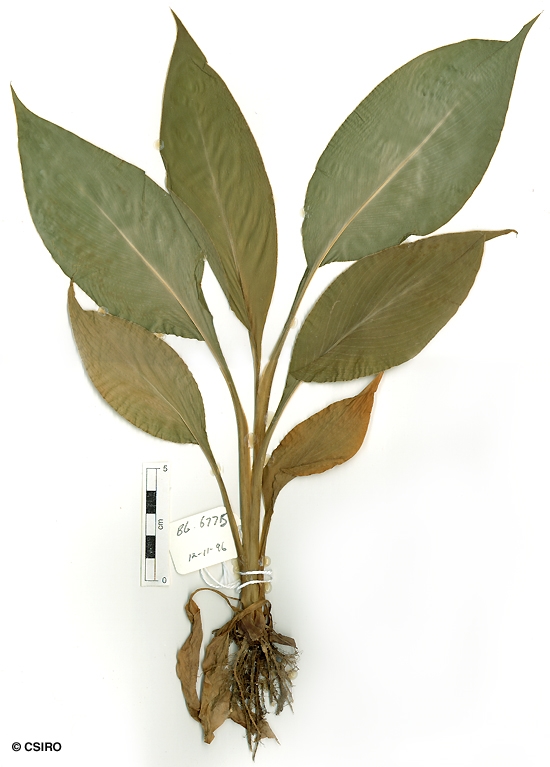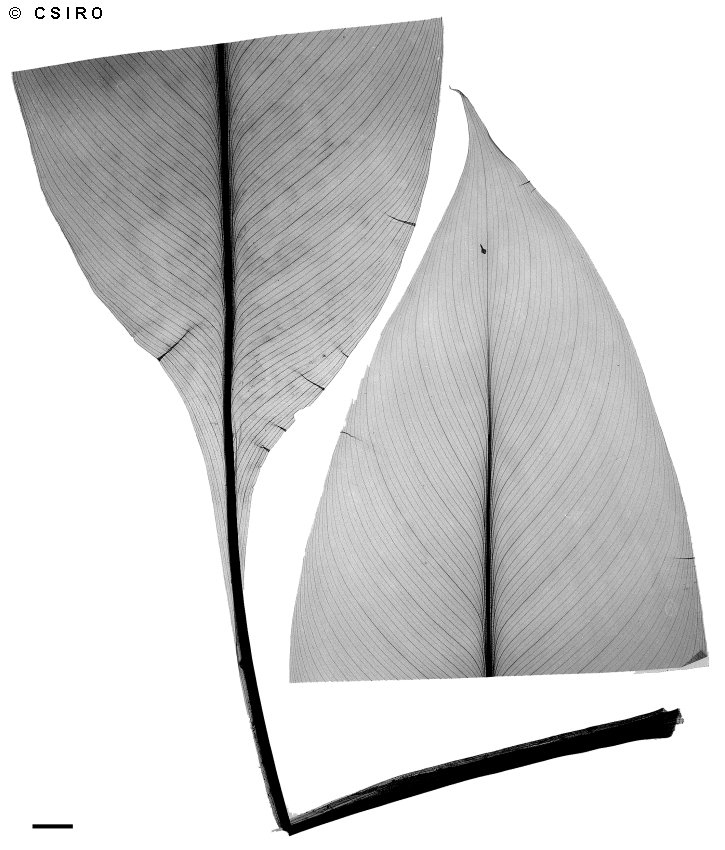Australian Tropical Rainforest Plants - Online edition
Canna indica L.



Linnaeus, C. von (1753) Species Plantarum 2: 1. Type: Habitat inter tropicos Asiae, Africa, Americae.
Indian Shot
Usually flowers and fruits as a shrub about 1-2 m tall.
Leaf blades quite large, about 23-45 x 12.5-25 cm, petioles about 2.5-3 cm long, sheathing the stem. Lateral veins numerous and parallel.
Flowers arranged in a spike-like inflorescence. Tepals six, the outer whorl (sepals) about 10 mm long, inner whorl (petals) about 33-60 mm long united at the base into a tube about 10 mm long. Stamens one, filament petaloid, about 20-26 x 2-4 mm, anther about 10 x 2 mm. Staminodes four, red, marked with orange and yellow streaks. Outer surface of ovary papillose. Style about 5 mm long.
Usually one cataphyll produced before the first true leaf. First pair of true leaves alternate with the bases clasping the stem. At the tenth leaf stage: leaves elliptic, tapering to the base and drawn out into a long tip at the apex. Petioles or leaf bases clasping the stem. Seed germination time 13 days.
The Canna is believed by the Burmese to have sprung from Buddha's blood. Legend has it that Dawadat, his cousin, was jealous that he did not have a following like Buddha's, and decided to destroy him. One day, while Buddha was meditating at the bottom of a hill, Dawadat rolled a huge stone down the hillside to crush him. By a miracle, the rock broke into small, harmless pieces, but one of these cut Buddha's toe, which bled. When it fell to the ground, the blood turned to a brilliant and beautiful red flowered plant, which we know as Canna. In Burma it is called Bohdda Tharanat.





